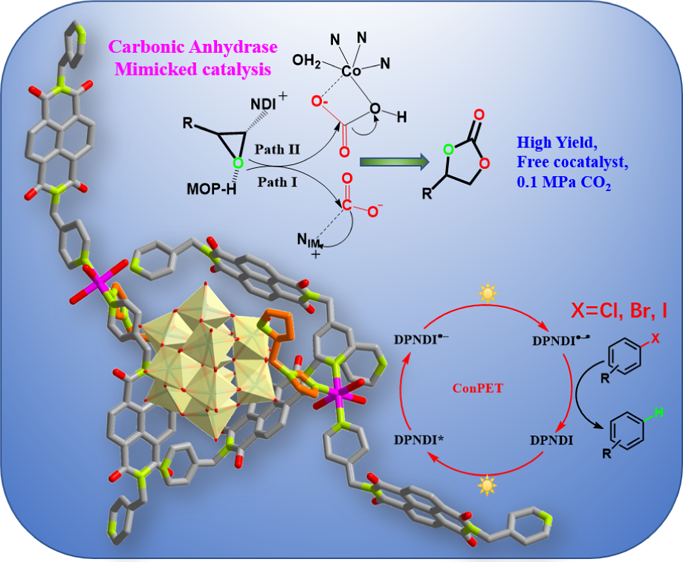题 目: Photoactive Metal-Organic Framework for the Reduction of Aryl Halides by the Synergistic Effect of Consecutive Photo-Induced Electron-Transfer and Hydrogen-Atom Transfer Processes
作 者: Jiachen He,Jie Li, Qiuxia Han,* Chen Si, Guiqin Niu, Mingxue Li, Jingping Wang, Jingyang Niu,
刊 名: ACS Appl. Mater. Interfaces
年卷页:2020, 12, 2199-2206.
影响因子:8.758
摘 要: Consecutive photoinduced electron transfer (ConPET) has advantages on overcoming the current energetic limitation of visible-light photoredox catalysis for utilizing the energies of two photons in one catalytic cycle. A heterogeneous approach for radical chain reduction of various aryl bromides and chlorides without adding any cocatalyst is introduced by incorporating polyoxometalates (POMs) and amine catalysts into a naphthalenediimide (NDI)-based polymer. CoW-DPNDI-PYI exhibits high activity in the photocatalytic reduction of aryl halides by the synergistic effects of ConPET and hydrogen-atom-transfer (HAT) processes and an enzyme-mimicking CO2 cycloaddition reaction. The ConPET process with N,N′-bis(4-pyridylmethyl)-naphthalenediimide (DPNDI) facilitates effective solar energy conversion. POMs and amine catalysts, as efficient HAT catalysts and electron donors, improve the generation of the ConPET process. The success of this work demonstrates the great application of the synergistic effects of ConPET and HAT processes in heterogeneous photocatalysis C-H arylation.

文章链接:https://pubs.acs.org/action/showCitFormats?doi=10.1021/acsami.9b13538
